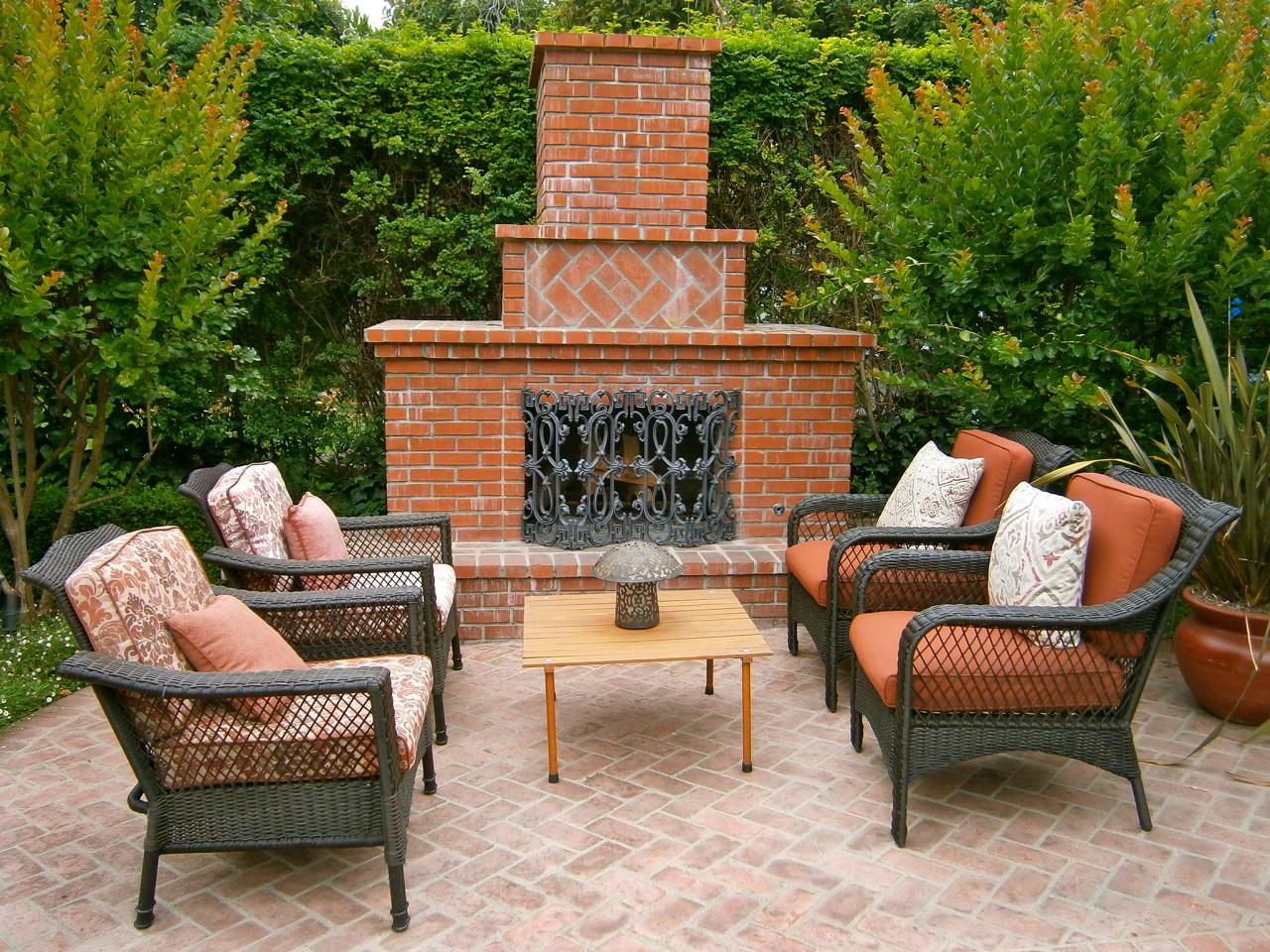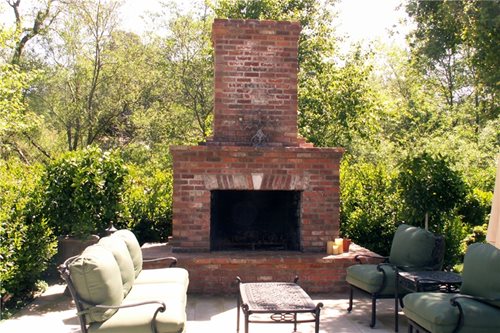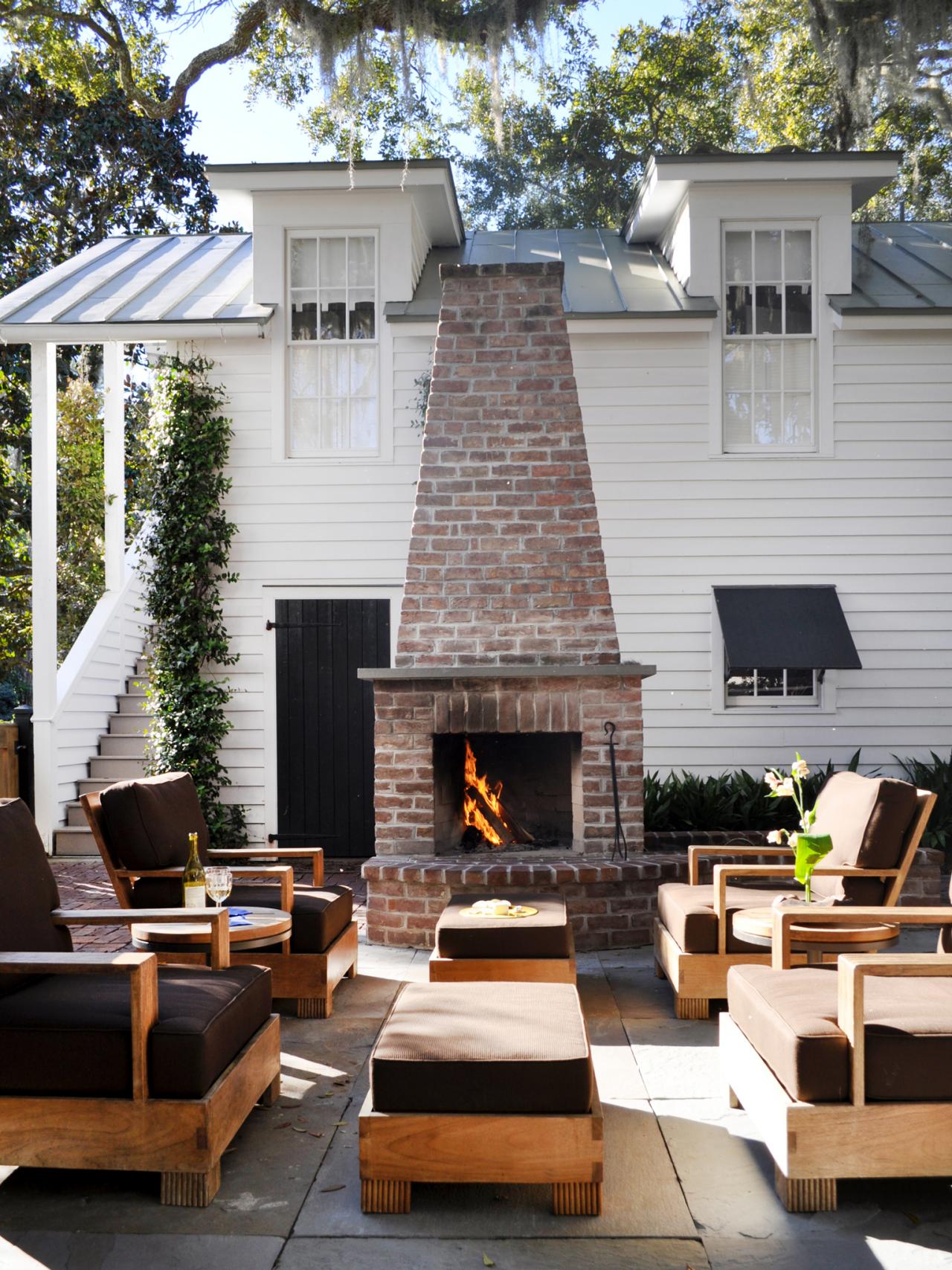An outdoor brick fireplace is a timeless addition to any backyard, offering warmth, ambiance, and a gathering spot for friends and family. Unlike complex installations, a simple brick fireplace can be built with basic materials and some DIY effort. Whether you’re roasting marshmallows, enjoying a quiet evening, or hosting a party, this structure enhances outdoor living without requiring excessive maintenance. Let’s talk about some aspects of planning, building, and enjoying a simple brick outdoor fireplace.
Choosing the Right Location
Selecting the perfect spot for your brick fireplace is crucial for safety and enjoyment. Ensure the area is flat, stable, and at least 10 feet away from structures or overhanging trees. Consider wind direction to prevent smoke from blowing toward seating areas. A level surface, such as a patio or gravel base, provides a solid foundation.
Local building codes may dictate setbacks or permit requirements, so check regulations before starting. Avoid low-lying areas where water can pool, as moisture damages bricks over time. Position the fireplace where it becomes a natural focal point, ideally near seating but with enough space for safe movement.
Accessibility is another factor, keep it close enough to the house for convenience but far enough to maintain safety. Think about views from inside your home; a well-placed fireplace can be enjoyed year-round. If possible, orient the opening away from prevailing winds to minimize smoke interference.
Selecting Materials and Design
Brick is a durable, heat-resistant choice that blends well with outdoor settings. Common options include clay bricks, concrete pavers, or fire-rated masonry blocks. Mortar should be high-temperature rated to withstand repeated heating and cooling. A simple design with a square or rectangular shape is easiest for beginners.
Consider adding a metal fire ring or grate to improve airflow and contain logs. The fireplace opening should be wide enough for easy fuel loading but not so large that heat escapes inefficiently. A chimney or smoke shelf helps direct smoke upward, reducing irritation for those gathered around.
For a rustic look, use reclaimed bricks, but ensure they’re in good condition. If you prefer a modern aesthetic, smooth-faced bricks or a painted finish can work. Keep the height around waist level for comfortable use, and include a small ledge for setting tools or drinks. Always wear protective gear when cutting bricks or mixing mortar.

Building the Foundation
A sturdy foundation prevents shifting and cracking over time. Start by digging a trench about 6 inches deep and filling it with gravel for drainage. Compact the gravel, then pour a concrete slab at least 4 inches thick. Reinforce with rebar if the ground is unstable.
Let the concrete cure for at least 48 hours before laying bricks. Use a level frequently to ensure each course is even. Apply mortar evenly between bricks, scraping off excess to maintain clean lines. The first few layers are critical—take your time to ensure they’re perfectly aligned.
If your design includes a hearth, extend the foundation to support it. A raised hearth offers seating space, while a flush one keeps the look minimal. For added stability, consider embedding metal braces in the mortar. Allow the structure to set for a few days before lighting the first fire.
Fireplace Safety Tips
Always keep a fire extinguisher or bucket of sand nearby when using the fireplace. Never leave a fire unattended, and fully extinguish it before going inside. Teach children to maintain a safe distance and use long-handled tools for adjusting logs.
Avoid burning treated wood, plastics, or trash, as they release toxic fumes. Hardwoods like oak or maple burn cleaner and longer than softwoods. Clear debris, dry leaves, and flammable objects from a 5-foot radius around the fireplace.
Install a spark screen to prevent embers from escaping. Check local burn bans or restrictions during dry seasons. If using a grill grate, ensure it’s stable and heat-resistant. Regularly inspect the bricks for cracks or mortar deterioration and repair them promptly.
Maintaining Your Fireplace
Inspect the fireplace before each use for structural damage or loose bricks. Brush away ash and soot buildup to prevent blockages. A stiff brush and mild detergent can clean soot stains, but avoid harsh chemicals that erode mortar.
Repoint crumbling mortar joints every few years to maintain stability. Cover the fireplace during heavy rain or snow to prolong its lifespan. If using a metal insert, check for rust and apply high-temperature paint if needed.
Store firewood away from the fireplace to deter pests. Seasoned wood burns more efficiently and produces less creosote. After winter, check for moisture damage and let the structure dry completely before using it again.
Enhancing the Ambiance
Add comfortable seating like benches or Adirondack chairs around the fireplace. Soft outdoor lighting, such as string lights or lanterns, creates a cozy atmosphere. A side table for drinks and snacks keeps essentials within reach.
Incorporate natural elements like stone pathways or potted plants to blend the fireplace into the landscape. A built-in wood storage box adds convenience while maintaining a tidy look. For cooler nights, keep blankets nearby for guests.
Personalize the space with weather-resistant cushions or decorative bricks. A small water feature nearby can provide soothing sounds. If space allows, a pergola or umbrella offers shade during daytime use.
How much does it cost to build a simple brick outdoor fireplace?
The cost varies based on materials and size, but a basic DIY fireplace can range from $300 to $1,500. Bricks, mortar, and concrete are the primary expenses, with optional costs for tools or professional help. Reclaimed bricks may lower costs, while custom designs or premium materials increase them. Factor in extras like a grill grate or seating area if desired. Always budget for unexpected expenses, such as additional foundation work or permits.
Can I build a brick fireplace without mortar?
Yes, a dry-stack fireplace uses interlocking bricks without mortar, making it easier to disassemble or modify. However, it’s less stable over time and may require thicker walls for support. Mortar provides better heat resistance and longevity, especially in areas with harsh weather. For a temporary or low-budget option, dry stacking works, but mortar is recommended for permanent structures.
What’s the best type of brick for an outdoor fireplace?
Fire-rated clay bricks or refractory bricks are ideal because they withstand high temperatures without cracking. Concrete pavers are a cheaper alternative but may degrade faster under intense heat. Avoid soft or porous bricks, as they absorb moisture and crumble over time. Always check the brick’s heat resistance rating before purchasing.
How do I keep smoke from blowing into seating areas?
Position the fireplace opening opposite prevailing winds and ensure the chimney is tall enough to draw smoke upward. A smoke shelf inside the fireplace helps redirect airflow. If smoke persists, try using drier wood or adjusting the log arrangement for better ventilation. In windy conditions, a temporary windbreak can also help.
Do I need a permit to build an outdoor fireplace?
Many localities require permits for permanent structures, especially those over a certain height or near property lines. Check with your city or county building department before starting. Even if not required, following local codes ensures safety and avoids future legal issues. Temporary or portable fire pits often have fewer restrictions.
How can I make my brick fireplace more efficient?
Use well-seasoned hardwood for cleaner, longer burns. A metal fire ring or grate improves airflow, making fires hotter and more efficient. Design the fireplace with a smaller opening to retain heat better. Adding a chimney cap can also reduce heat loss while preventing debris or rain from entering. Regular maintenance, like clearing ash buildup, ensures optimal performance.
Simple Elegant Texas Patio fireplace, Backyard fireplace, Diy
How to Build a Brick Fireplace – DIY – Part 1 of 5
How to Build An Outdoor Fireplace Step-by-Step Guide – #BuildWithRoman
DIY Outdoor Fireplace Ideas
Outdoor fireplace plans
Related Posts:
- Stacked Stone Outdoor Fireplace
- DIY Small Outdoor Fireplace
- Outdoor Fireplaces Firepits
- Simple Brick Outdoor Fireplace
- Ideas For Outdoor Fireplaces On Patios
- Outdoor Fireplace Ideas Stone
- Outdoor Rock Fireplace Designs
- DIY Outdoor Fireplace Designs
- Outdoor Fireplace Ideas Deck
- Outdoor Cooking Fireplace Designs











